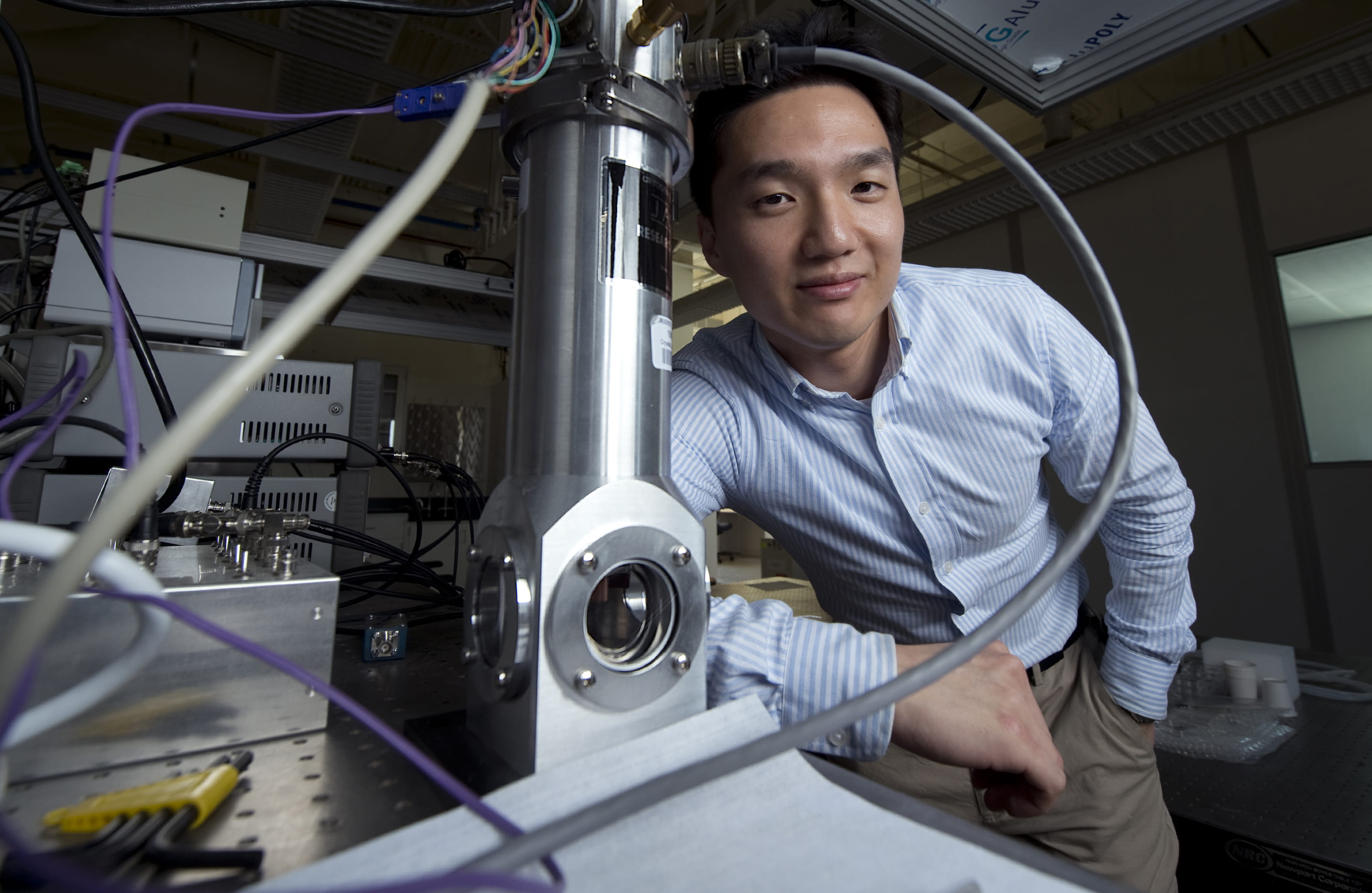Could holey silicon be the holy grail of electronics?
UCI engineers find that innovative material facilitates effective on-chip cooling

Irvine, Calif., April 12, 2018 — Electronics miniaturization has put high-powered computing capability into the hands of ordinary people, but the ongoing downsizing of integrated circuits is challenging engineers to come up with new ways to thwart component overheating.
Scientists at the University of California, Irvine made a breakthrough recently in verifying a new material configuration to facilitate cooling. In a study in the journal Nanotechnology, members of UCI’s Nano Thermal Energy Research Group highlight the attributes of holey silicon, a computer chip wafer with tiny, vertically etched orifices that work to shuttle heat to desired locations.
“We found that heat prefers to travel vertically through but not laterally across holey silicon, which means the material can effectively move the heat from local hot spots to on-chip cooling systems in the vertical direction while sustaining the necessary temperature gradient for thermoelectric junctions in the lateral direction,” said corresponding author Jaeho Lee, UCI assistant professor of mechanical & aerospace engineering.
“This innovation could potentially be ideal for keeping electronic devices such as smartphones cool during operation,” said lead author Zongqing Ren, a graduate student researcher in the NTERG.
He said that lab simulations demonstrated that the cooling effectiveness of holey silicon is at least 400 percent better than chalcogenides, compounds commonly used in thermoelectric cooling devices.
The lab’s holey silicon research is a follow-on to a study published in Nature Communications in early 2017 in which Lee, as lead author, and his UC Berkeley-based collaborators employed nanometer-scale silicon mesh material to investigate properties of phonons, quasiparticles that give scientists insight into thermal transport mechanisms.
“We know that phonons can show wave-like as well as particle-like behavior during thermal transport,” Lee said. “Using meshes with different hole sizes and spacing, we were able to clarify complex thermal transport mechanisms at the nanoscale.”
Knowledge gained from the earlier study helped his team understand how small, neck-shaped structures created by the etched holes in holey silicon cause phonon backscattering, a particle effect leading to low in-plane thermal conductivity. High cross-plane thermal conductivity was caused by long-wavelength phonons that help to move heat away.
Lee said the temperature problem in electronics has grown in the past few years as microchip designers seem to have reached a size boundary. With larger components, manufacturers can use heat sinks, fins and even fans to funnel warmth away from critical hardware. On today’s densely packed chips with billions of nanoscale transistors – often sandwiched in slim, pocketable consumer products – there’s no room for such cooling technologies.
Other key issues are longevity and reliability. Semiconductor chips are being embedded in many new places – acting as sensors and actuators in cars and appliances and as nodes along the internet of things. These devices are expected to run continuously for years and even decades. Prolonged exposure to heat could cause the failure of such infrastructure.
“On one hand, nanotechnology has opened up a whole new world of possibilities, but on the other, it’s created a host of challenges,” Lee said. “It’s important that we continue to develop a better understanding of the fundamentals of thermal transport and find ways to control heat transfer at the nanoscale.”
About the University of California, Irvine: Founded in 1965, UCI is the youngest member of the prestigious Association of American Universities. The campus has produced three Nobel laureates and is known for its academic achievement, premier research, innovation and anteater mascot. Led by Chancellor Howard Gillman, UCI has more than 30,000 students and offers 192 degree programs. It’s located in one of the world’s safest and most economically vibrant communities and is Orange County’s second-largest employer, contributing $5 billion annually to the local economy. For more on UCI, visit www.uci.edu.
Media access: Radio programs/stations may, for a fee, use an on-campus ISDN line to interview UCI faculty and experts, subject to availability and university approval. For more UCI news, visit wp.communications.uci.edu. Additional resources for journalists may be found at communications.uci.edu/for-journalists.